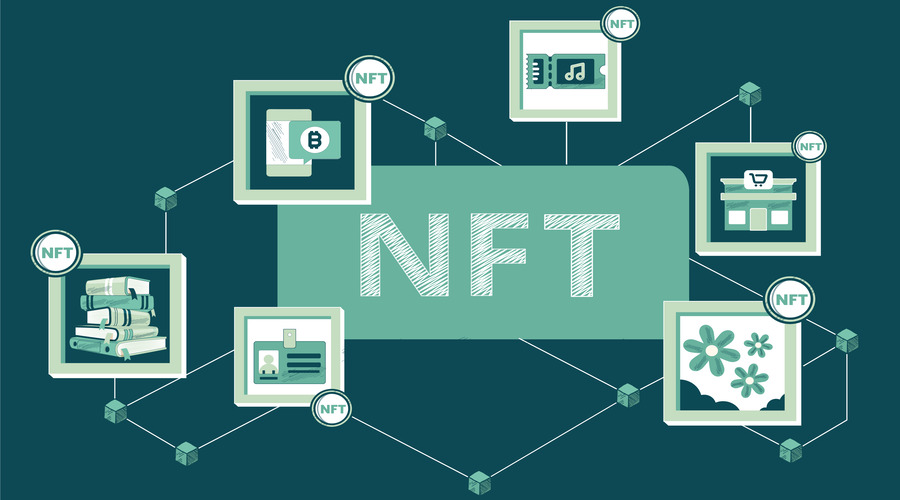NFTs and the Environment: Reducing Their Environmental Impact

NFTs and the Environment: Reducing Their Environmental Impact
Non-Fungible Tokens (NFTs) have gained immense popularity in recent years. While they provide an exciting opportunity for creators to sell their digital art and other unique assets, NFTs have come under fire for their impact on the environment. The debate over the sustainability of NFTs has led to concerns about their contribution to climate change. In this article, we will explore the environmental impact of NFTs and ways to reduce their carbon footprint.
Impact of NFTs on the Environment
The creation and sale of NFTs require significant amounts of energy, which has a substantial environmental impact. The blockchain technology used to create and verify NFTs requires a vast amount of computational power, which consumes a significant amount of electricity. This energy consumption leads to a high carbon footprint, contributing to climate change.
Ways to Reduce the Impact of NFTs on the Environment
While the impact of NFTs on the environment cannot be eliminated entirely, there are several ways to reduce it.
1. Switch to Renewable Energy
One way to reduce the environmental impact of NFTs is to switch to renewable energy. Several blockchain platforms have already committed to using renewable energy sources to power their networks. Switching to renewable energy can significantly reduce the carbon footprint of NFTs and help mitigate their impact on the environment.
2. Choose a Green Platform
Not all blockchain platforms are created equal. Some platforms use less energy than others, making them a more sustainable choice for creators and collectors. Choosing a green platform can significantly reduce the carbon footprint of NFTs.
3. Offset Carbon Emissions
Offsetting carbon emissions is another way to reduce the environmental impact of NFTs. Several organizations offer carbon offsetting programs that allow individuals and companies to offset their carbon emissions investing in renewable energy projects or conservation efforts.
4. Create Smaller NFTs
Creating smaller NFTs is another way to reduce the environmental impact of NFTs. Smaller files require less computational power, reducing energy consumption and carbon emissions.
5. Educate Others
Finally, educating others about the environmental impact of NFTs and ways to reduce it is essential. By raising awareness and promoting sustainable practices, we can all contribute to reducing the carbon footprint of NFTs.
The Debate on the Sustainability of NFTs in the Environment

The environmental impact of NFTs has become a topic of debate among creators, collectors, and environmentalists. While some argue that NFTs have a low impact on the environment compared to traditional art practices, others point out that the energy consumption required to create and sell NFTs has a significant carbon footprint.
On one hand, NFTs can be seen as a more sustainable alternative to traditional art practices, such as printing and shipping physical artworks. NFTs eliminate the need for physical materials and reduce transportation-related emissions. Additionally, NFTs can provide an additional revenue stream for artists, allowing them to continue creating and selling their work without relying on physical galleries or art shows.
However, critics argue that the energy consumption required to create and sell NFTs has a significant impact on the environment. The energy required to power the blockchain technology used to create and verify NFTs can be high, leading to a high carbon footprint. Some have compared the energy consumption of NFTs to that of driving a car for several years.
The Future of Sustainable NFTs in the Environment
Despite the debate over the sustainability of NFTs, many are optimistic about the future of sustainable NFTs. As the technology continues to evolve, new solutions may arise that reduce the carbon footprint of NFTs. For example, some platforms are exploring ways to use renewable energy sources to power their networks, while others are experimenting with alternative verification methods that require less energy.
Additionally, many creators and collectors are taking steps to reduce the environmental impact of NFTs. Some are offsetting their carbon emissions, while others are choosing to work with green platforms that prioritize sustainability.
Overall, the future of NFTs and sustainability is still uncertain, but many are working towards a more sustainable future for digital art. As the debate over the environmental impact of NFTs continues, it’s essential to consider the impact of our actions and make conscious choices that help mitigate our contribution to climate change.
The Role of Education in Reducing the Impact of NFTs on the Environment
Education is crucial in reducing the environmental impact of NFTs. By raising awareness and promoting sustainable practices, we can all contribute to reducing the carbon footprint of NFTs. Here are some ways in which education can help:
1. Educating Creators and Collectors
One way to reduce the environmental impact of NFTs is to educate creators and collectors. By teaching them about sustainable practices, we can help them make more informed decisions when creating and selling NFTs. This education can include information about green platforms, renewable energy, and carbon offsetting.
2. Educating Consumers
Educating consumers is another crucial step in reducing the environmental impact of NFTs. By raising awareness about the carbon footprint of NFTs, we can encourage consumers to make more sustainable choices when purchasing NFTs. This education can include information about the environmental impact of different platforms and the benefits of choosing sustainable practices.
3. Education for Future Innovations
Education is also vital for the development of future innovations that can reduce the environmental impact of NFTs. By promoting research and development in sustainable blockchain technology, we can work towards a more sustainable future for NFTs.
The Benefits of Sustainable NFTs in the Environment
While the environmental impact of NFTs cannot be ignored, there are also several benefits to sustainable NFTs. These include:
1. Reduced Carbon Footprint
By choosing sustainable practices, we can significantly reduce the carbon footprint of NFTs. This reduction can help mitigate the contribution of NFTs to climate change.
2. Increased Revenue for Creators
Sustainable NFTs can also provide an additional revenue stream for creators. By choosing sustainable platforms, creators can reach a wider audience and sell their work to environmentally conscious consumers.
3. Promoting Sustainable Practices
Choosing sustainable NFTs can also help promote sustainable practices in the digital art world. By raising awareness and promoting sustainable platforms, we can encourage the adoption of sustainable practices in other areas of the industry.
NFTs and the Circular Economy
NFTs can play a role in promoting the circular economy. The circular economy is an economic system that focuses on keeping resources in use for as long as possible, reducing waste and promoting sustainable practices. By creating and selling digital assets as NFTs, we can promote the reuse and recycling of digital content.
1. Reuse
One way that NFTs promote the circular economy is through the reuse of digital content. Instead of creating new digital content for each sale, NFTs allow creators to sell the same digital asset multiple times without the need for physical materials. This reuse of digital content reduces waste and promotes sustainable practices.
2. Recycling
NFTs also promote recycling in the digital art world. When a digital asset is sold as an NFT, it can be resold multiple times, reducing the need for new digital content. Additionally, when an NFT is no longer needed, it can be destroyed, and the digital content can be recycled into new digital assets.
3. Sustainability in the Art World
NFTs can also promote sustainability in the art world. By reducing the need for physical materials and transportation, NFTs can significantly reduce the environmental impact of traditional art practices. Additionally, promoting sustainable practices in the digital art world, we can encourage the adoption of sustainable practices in other areas of the industry.
Conclusion
While NFTs have provided new opportunities for creators and collectors, their environmental impact cannot be ignored. The creation and sale of NFTs require significant amounts of energy, which has a substantial carbon footprint. However, taking steps to reduce their carbon footprint, such as choosing green platforms, using renewable energy, offsetting carbon emissions, creating smaller NFTs, and educating others, we can work towards a more sustainable future for NFTs. It’s up to all of us to make conscious choices that help mitigate the contribution of NFTs to climate change and promote a more sustainable future for digital art.
FAQs
Q1. What is the carbon footprint of NFTs?
The carbon footprint of NFTs varies depending on the platform used to create and sell them. However, NFTs typically have a high carbon footprint due to the energy required to power the blockchain technology used to create and verify them.
Q2. How can I reduce the carbon footprint of NFTs?
You can reduce the carbon footprint of NFTs choosing a green platform, switching to renewable energy, offsetting carbon emissions, creating smaller NFTs, and educating others about sustainable practices.
Q3. Are all blockchain platforms equally sustainable?
No, not all blockchain platforms are equally sustainable. Some platforms use less energy than others, making them a more environmentally friendly choice.
Q4. Can NFTs be sustainable?
While NFTs have a high carbon footprint, there are ways to make them more sustainable. By choosing green platforms, using renewable energy, offsetting carbon emissions, creating smaller NFTs, and educating others, we can work towards a more sustainable future for NFTs.
Q5. How can I offset my carbon emissions from NFTs?
Several organizations offer carbon offsetting programs that allow individuals and companies to offset their carbon emissions investing in renewable energy projects or conservation efforts. You can also calculate your carbon footprint and take steps to reduce it, such as switching to renewable energy or using a green platform.
I’ve been involved with cryptocurrency for three years. I have been a vocal advocate for the people and an active part of the community. I am well-known for my book “Crypto Revolution: An Insider’s Guide to the Future of Money” and blog “The Crypto Chronicles.” In addition, I frequently contribute to CoinDesk, one of the top news websites for cryptocurrencies. I write as well as invest actively in a number of bitcoin initiatives.
